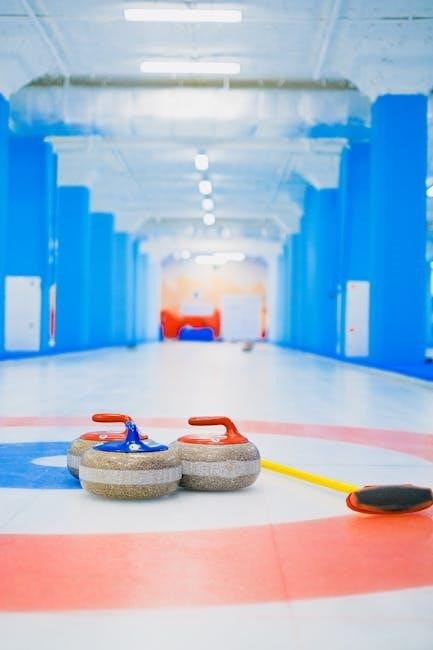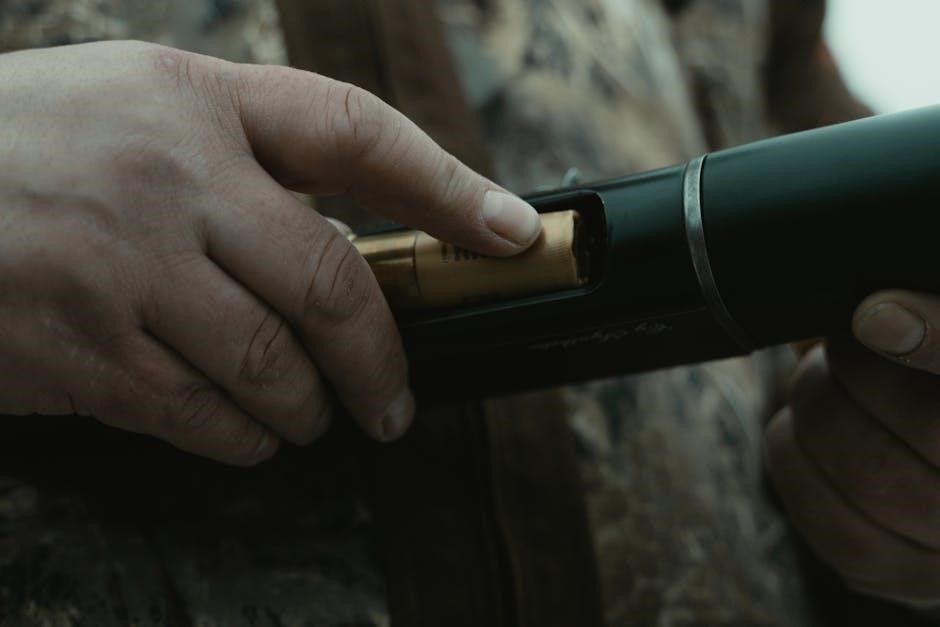Farkle Score Sheet: A Comprehensive Guide (Printable PDF)
Farkle, a delightful dice game, demands meticulous scorekeeping! This guide provides printable PDF score sheets, streamlining gameplay and enhancing your Farkle experience.
Discover layouts tailored for various player counts, ensuring efficient tracking of points and bonuses. Downloadable options simplify game nights!
Explore customizable features and software options for designing personalized score sheets, optimizing your Farkle sessions.
Enjoy seamless printing with recommended paper sizes and settings, guaranteeing clear and legible records of every thrilling roll.
What is Farkle?
Farkle is a captivating and fast-paced dice game enjoyed by players of all ages, often requiring a dedicated printable PDF score sheet for accurate tracking. The core objective revolves around rolling six dice and accumulating points based on specific combinations. These combinations, ranging from single ones and fives to more complex sequences, each hold a designated point value.
A “Farkle” occurs when a player fails to score any points with their initial roll or subsequent re-rolls. This results in the loss of all points accumulated during that turn, adding an element of risk and excitement. Strategic decision-making is crucial – players must decide when to “bank” their points and end their turn, or risk rolling again for potentially higher rewards, but facing the possibility of a devastating Farkle.
The game continues until a player reaches a predetermined score, typically 10,000 points. Utilizing a well-designed printable PDF score sheet is essential for maintaining clarity and preventing errors during this engaging and competitive game.
Farkle: A Brief History and Origins

The precise origins of Farkle remain somewhat shrouded in mystery, though its roots trace back to various dice games played for centuries. Many believe it evolved from older games like 10,000, a similar dice-rolling and scoring game popular in the early 20th century. The name “Farkle” itself is thought to have originated in the Southern United States, possibly as slang for a failed roll or a risky gamble.
While a definitive historical timeline is elusive, Farkle gained significant popularity in the latter half of the 20th century, becoming a staple at family gatherings and social events. The game’s simple rules and reliance on luck, combined with strategic decision-making, contributed to its widespread appeal.
As its popularity grew, the need for organized scorekeeping became apparent, leading to the creation of printable PDF score sheets to streamline gameplay and maintain accurate records of each player’s progress. These sheets have become an integral part of the Farkle experience.
Understanding the Basic Farkle Rules
Farkle is played with six standard dice, where the objective is to score points by rolling specific combinations. A turn begins with a player rolling all six dice. Any dice showing scoring combinations (1s, 5s, or three-of-a-kind) are set aside, and the player can choose to either roll the remaining dice or “bank” their accumulated points.
However, if a player rolls and doesn’t achieve any scoring combinations, it’s a “Farkle,” resulting in a loss of all points accumulated during that turn. Rolling three or more of the same number allows for continued rolling, adding to the score. The game continues until a player reaches a predetermined score, typically 10,000 points.
Efficient scorekeeping is crucial, and a printable PDF score sheet is invaluable for tracking each player’s banked points, Farkle occurrences, and overall progress towards victory. Understanding these rules is key to enjoying this classic dice game!
Essential Farkle Terminology
Navigating Farkle requires understanding specific terms. A “Farkle” itself signifies rolling no scoring combinations, forfeiting turn points. “Hot Dice” refers to continuing to roll after scoring, aiming for higher totals. Conversely, “Cold Dice” means banking points and ending your turn.
Specific combinations have unique names: three-of-a-kind (excluding ones) are worth a set value, while three ones earn 300 points. Five of a kind are highly valuable, and a “Straight” (1-6) is a significant score. A printable PDF score sheet helps track these combinations efficiently.
Knowing these terms streamlines gameplay and communication. Utilizing a well-designed score sheet, readily available as a printable PDF, ensures accurate recording of scores and minimizes confusion during fast-paced rounds. Mastering the lingo enhances the Farkle experience!

Printable Farkle Score Sheet Options
Downloadable, printable PDF score sheets offer diverse layouts! Choose from standard designs or variations tailored for 2-6 players, enhancing your Farkle game.
Standard Farkle Score Sheet Layout
The quintessential Farkle score sheet, available as a printable PDF, typically features columns dedicated to each player. Across the top, you’ll find spaces for recording round numbers, ensuring clear progression throughout the game. Each player’s column includes sections for tracking cumulative scores, bonus points, and individual round totals.
A key element is the designated area for marking “hot dice” – rolls that yield scoring combinations. Conversely, a space indicates a “Farkle” – a round where no scoring dice are rolled. Often, the sheet incorporates a quick reference guide to scoring combinations, like straights, three-of-a-kind, or specific number groupings (1s, 5s, etc.).
Visually, these sheets often employ a clean, grid-based design for easy readability. Some versions include a dedicated section for tracking cumulative bonuses earned throughout the game. The printable PDF format ensures compatibility across devices and effortless reproduction for multiple players. A well-designed standard layout promotes organized and enjoyable Farkle gameplay.
Score Sheet Variations for Different Player Counts (2-6 Players)
Printable PDF Farkle score sheets adapt to accommodate varying player numbers. For 2-3 players, a wider column format is common, providing ample space for detailed score tracking. These sheets often span a single page, maximizing clarity. As player counts increase to 4-6, sheets expand horizontally, adding more columns to maintain individual player visibility.
Larger groups may benefit from multi-page score sheets, where each page represents a segment of the game or a specific scoring phase. Some variations incorporate condensed layouts for 6 players, prioritizing space efficiency. Regardless of the player count, a consistent scoring structure is maintained, ensuring fair play.

Printable options often include pre-designed templates tailored to specific player ranges. Choosing the appropriate sheet size prevents overcrowding and facilitates easy score updates during fast-paced Farkle matches. These variations enhance the gaming experience for any group size.
Detailed Score Sheet Sections Explained
A comprehensive printable PDF Farkle score sheet typically features distinct sections for organized tracking. The “Player Name” area clearly identifies each participant. A “Round Number” section allows for sequential game progression monitoring. The core “Score” column records points accumulated each round, while a “Bonus” section notes any earned advantages.
Crucially, a “Total Score” area provides a running tally of each player’s overall points. Many sheets include a dedicated “Hot Dice” indicator, marking successful rounds without a Farkle. A “Farkle” section notes unsuccessful rolls, preventing point accumulation. Some advanced sheets incorporate spaces for tracking specific dice combinations and their corresponding values.
Printable versions often include a “Game End” section for final score confirmation. Understanding these sections ensures accurate scorekeeping and a smooth Farkle experience.
Customizable Score Sheet Features
Printable PDF Farkle score sheets offer exciting customization options! Many templates allow for personalized player name fields, enhancing the gaming experience. You can adjust column widths to accommodate larger scores or add extra space for detailed notes on each round.
Some sheets permit the inclusion of house rule sections, documenting unique game variations. Color-coding options can visually distinguish players or highlight significant scores. Editable PDF forms allow direct input, eliminating handwritten entries.
Advanced customization includes adding logos or themed designs, creating a unique Farkle atmosphere. Tailoring the sheet to your group’s preferences ensures optimal usability and enjoyment. These features transform a simple score sheet into a personalized gaming accessory!

Creating Your Own Printable Farkle Score Sheet
Design a printable PDF Farkle score sheet using software like Microsoft Word or Google Docs! Tailor it to your needs, ensuring clear scoring and easy tracking during gameplay.
Software Options for Score Sheet Design (Microsoft Word, Google Docs)
Microsoft Word offers robust table creation and formatting tools, ideal for constructing a detailed Farkle score sheet. Utilize gridlines, cell shading, and font customization to enhance readability. Easily insert logos or game-specific graphics for a personalized touch. Saving as a PDF ensures consistent formatting across all devices.
Google Docs provides a collaborative and accessible alternative. Its table features, while simpler than Word’s, are sufficient for creating a functional score sheet. The advantage lies in real-time collaboration – multiple players can contribute to the design. Exporting to PDF is straightforward, preserving the layout for printing.
Both platforms allow for the inclusion of essential elements: player names, round numbers, scoring categories (ones, fives, etc.), total scores, and bonus sections. Consider using templates as a starting point to save time and effort. Remember to prioritize clarity and ease of use when designing your printable score sheet.
Free Online Farkle Score Sheet Generators
Several websites offer free online Farkle score sheet generators, simplifying the creation of printable PDFs. These tools often feature pre-designed templates, eliminating the need for manual formatting in programs like Word or Google Docs. Simply input the number of players, and the generator creates a customized score sheet ready for download.
These generators typically allow basic customization, such as adding player names or adjusting column widths. Some offer more advanced options, like choosing different color schemes or including specific scoring rules. The generated files are usually in PDF format, ensuring compatibility and print quality.
While convenient, these tools may have limitations in terms of design flexibility. However, they are an excellent option for quick and easy score sheet creation, especially for casual Farkle games. Explore various generators to find one that best suits your needs and preferences.
Designing a Clear and User-Friendly Score Sheet
When crafting your own printable PDF Farkle score sheet, prioritize clarity and ease of use. Employ a clean layout with well-defined columns for each player, clearly labeled with their names. Allocate sufficient space for recording each round’s score, hot dice, and total points.
Use a legible font size and avoid overly complex designs that might distract from score tracking. Consider incorporating visual cues, like shading or borders, to differentiate between sections. A dedicated area for tracking “banked” points is crucial.
Ensure the sheet accommodates the maximum number of rounds you anticipate playing. A well-designed sheet minimizes errors and streamlines gameplay, enhancing the overall Farkle experience. Remember, a simple, intuitive design is key to efficient scorekeeping!
Tips for Effective Score Tracking During Gameplay
Utilizing a well-designed printable PDF Farkle score sheet is only the first step. During gameplay, designate one player as the official scorekeeper to minimize confusion and errors. Verify each scoring combination immediately after the roll, ensuring accuracy.
Clearly mark “Farkles” and any hot dice rolls on the sheet. Regularly update the running totals for each player, preventing miscalculations later. Encourage players to double-check their own scores as a collaborative effort.
Keep the score sheet readily accessible and well-lit. A dedicated pen for each player can also help avoid mix-ups. Consistent and diligent score tracking ensures a fair and enjoyable Farkle game for everyone!

Advanced Farkle Scoring and Strategies
Farkle mastery involves understanding hot and cold dice, strategic risk assessment, and scoring combinations. A printable PDF score sheet aids in tracking complex plays!
Optimize your game with informed decisions and adaptable strategies for ultimate Farkle success.
Hot Dice and Cold Dice Explained
Hot dice in Farkle refer to dice showing scoring combinations during your initial roll – ones, fives, or three-of-a-kind. These are advantageous, allowing you to bank points and continue rolling. A well-designed printable PDF score sheet will have dedicated sections to clearly record these initial scoring dice, simplifying point calculation.
Conversely, cold dice are those that don’t yield any scoring combinations on the first roll. This forces you to either “farkle” (lose all points for that turn) or bank any points accumulated from previous rolls. Utilizing a printable PDF score sheet helps visualize potential risks and rewards when deciding whether to continue rolling with cold dice.
Understanding this distinction is crucial for strategic play. A printable PDF score sheet, with clearly marked areas for banked points and potential farkle outcomes, becomes an invaluable tool. It allows players to quickly assess their position and make informed decisions about continuing to roll or safeguarding their accumulated score.
Effective scorekeeping on a printable PDF sheet aids in recognizing patterns and adapting your strategy based on whether the dice are running “hot” or “cold”.
Scoring Combinations and Their Values
Farkle scoring hinges on recognizing specific dice combinations. A printable PDF score sheet must clearly delineate these, alongside their corresponding point values. Ones are typically worth 100 points, while fives earn 50. Three-of-a-kind scores escalate with each additional die – three of a kind is worth the face value multiplied by 100, and so on.
A full house (three of one number and two of another) often yields 250 points, and a straight (1-6) is a substantial 1500. Your printable PDF should have dedicated spaces to tally these complex combinations efficiently.
Accurate recording on a well-designed printable PDF score sheet minimizes errors and disputes. It allows players to quickly verify scores and maintain a clear overview of the game’s progress.
Furthermore, a printable PDF can include a quick reference guide to these scoring rules, ensuring all players are aligned. This promotes fair play and enhances the overall Farkle experience.
Strategic Dice Rolling and Risk Assessment
Farkle isn’t purely luck; strategic dice rolling is crucial. A well-designed printable PDF score sheet aids in tracking potential risks and rewards. Knowing when to ‘push your luck’ versus ‘banking’ points requires careful assessment.
Experienced players analyze remaining dice, evaluating the probability of scoring combinations. A printable PDF can include a section for noting potential scoring opportunities. Deciding whether to re-roll after scoring some points involves weighing the risk of ‘farkling’ (losing all points) against the potential for a higher score.
Utilizing a printable PDF to record previous rolls can reveal patterns and inform future decisions.
Effective risk assessment, coupled with a clear printable PDF score sheet, transforms Farkle from a game of chance into a compelling battle of wits. Mastering this balance is key to consistent success.
Farkle Variations and House Rules
Farkle’s adaptability shines through numerous variations and house rules. A versatile printable PDF score sheet can accommodate these customizations. Some groups modify scoring combinations, altering point values for specific dice rolls.
Common house rules include variations on the ‘hot dice’ rule, impacting subsequent turns. Others introduce bonus points for achieving specific, challenging combinations. A printable PDF allows for easy notation of these altered rules, ensuring clarity for all players.
Certain variations introduce new scoring categories or modify the conditions for ‘farkling’. Utilizing a printable PDF with ample space for notes is essential when implementing these changes.
Regardless of the chosen variation, a well-designed printable PDF score sheet remains vital for maintaining accurate records and fostering a fair and enjoyable Farkle experience.

Downloading and Printing Your Farkle Score Sheet
PDF format ensures consistent display across devices, ideal for printable Farkle score sheets. Download, select print, and enjoy streamlined game nights with clear, organized tracking!
PDF Format: Why It’s Ideal for Printing
PDF (Portable Document Format) stands as the gold standard for sharing and printing documents, and Farkle score sheets are no exception. Its primary advantage lies in its platform independence; a PDF will render identically on Windows, macOS, Linux, or mobile devices, guaranteeing your score sheet looks precisely as intended, regardless of the user’s operating system or software.
Unlike editable formats like Word documents, PDFs preserve formatting, fonts, and layout, preventing unwanted shifts during printing. This is crucial for a score sheet where clear, consistent lines and spaces are essential for accurate tracking. Furthermore, PDFs are generally smaller in file size than equivalent Word documents, making them quicker to download and share.
PDFs also support high-resolution graphics, ensuring crisp, clean lines on your printed score sheet. This is particularly important if your score sheet includes logos or intricate designs. The format’s security features can also prevent unauthorized modifications to your score sheet template, preserving its integrity for repeated use. Choosing a PDF ensures a hassle-free, professional-looking printable Farkle score sheet every time.
Recommended Paper Size and Quality
For optimal Farkle score sheet printing, standard US Letter size (8.5 x 11 inches) is highly recommended. This size provides ample space for tracking scores, combinations, and player information without feeling cramped. A4 paper (210 x 297 mm) is a suitable alternative if US Letter isn’t readily available.
Regarding paper quality, a weight of 20-24 lb (75-90 gsm) is ideal. This provides sufficient thickness to prevent bleed-through from pens or markers, ensuring a clean and legible score sheet. Brighter white paper generally enhances readability, especially under varying lighting conditions.
Consider using slightly heavier paper (28-32 lb) for increased durability, particularly if you anticipate frequent use or handling. Matte paper is preferable to glossy, as it reduces glare and provides a better writing surface. Ultimately, the goal is to select a paper that balances cost-effectiveness with print quality and usability for your printable Farkle score sheets.
Printing Settings for Optimal Results
To achieve the best possible print quality for your printable Farkle score sheets, select “Actual Size” or “100% Scale” in your printer settings. This ensures the score sheet prints without any scaling or distortion, maintaining accurate lines and spaces for easy scoring.
Choose a standard print quality setting – “Normal” or “Standard” typically suffices. Higher quality settings may consume more ink without significantly improving readability for this type of document. Ensure your printer is set to print in grayscale unless you specifically desire color.
Select “Portrait” orientation for the standard score sheet layout. Test print a single page before printing the entire set to verify the settings and paper alignment. Adjust margins if necessary to prevent any content from being cut off. Proper settings guarantee a functional and visually clear Farkle experience!
Troubleshooting Common Printing Issues

If your printable Farkle score sheet prints with cut-off edges, check your printer’s margin settings. Reduce margins or select “Fit to Page” (though this may slightly alter the scale). For faded prints, verify ink levels and select a higher print quality setting, but be mindful of ink consumption.
If the score sheet appears distorted or stretched, ensure the scaling is set to “Actual Size” or “100%” in your print dialogue box. Incorrect paper size selection can also cause issues; confirm the paper size matches your loaded paper.
Blank pages often indicate a printer driver issue. Update your printer driver or try printing from a different application. If problems persist, restart your printer and computer. A test print can quickly identify and resolve many common Farkle score sheet printing problems!

Farkle Resources and Communities
Farkle enthusiasts thrive online! Discover platforms offering games, strategy guides, and forums. Find additional printable PDF score sheets and connect with fellow players!
Enhance your gameplay through shared knowledge and friendly competition within vibrant Farkle communities.
Online Farkle Games and Platforms
Farkle’s accessibility extends to numerous online platforms, offering both solo and multiplayer experiences. These digital arenas provide convenient alternatives to traditional tabletop gameplay, eliminating the need for physical dice and, of course, printable PDF score sheets – though some players still prefer to use them even online!
Several websites and mobile applications host Farkle games, ranging from simple, browser-based versions to more sophisticated apps with advanced features and customizable rules. These platforms often handle scorekeeping automatically, but downloading and utilizing a printable PDF score sheet alongside digital play can be beneficial for tracking personal statistics or for players who enjoy a tactile experience.
Exploring these online options allows players to practice strategies, compete against others globally, and discover variations of the game. Many platforms also offer tutorials and guides, aiding newcomers in understanding the intricacies of Farkle. Remember to check user reviews and platform security before engaging in online gameplay. Utilizing a printable PDF alongside can help you analyze your game.
Farkle Strategy Guides and Tutorials
Mastering Farkle involves understanding not just the rules, but also strategic dice rolling and risk assessment. Numerous online resources offer comprehensive guides and tutorials to elevate your gameplay, even when utilizing a printable PDF score sheet for tracking.
These resources delve into concepts like “hot dice” and “cold dice,” explaining when to push your luck and when to bank your points. They often analyze scoring combinations, detailing the optimal strategies for maximizing your score. While a printable PDF helps record results, these guides teach how to achieve them.
Many tutorials incorporate example scenarios and probability calculations, helping players make informed decisions during each turn. Whether you’re a beginner or an experienced player, these guides can refine your technique and improve your chances of winning. Combining strategic knowledge with diligent scorekeeping using a printable PDF creates a powerful advantage.
Farkle Forums and Discussion Groups
Engage with fellow Farkle enthusiasts in vibrant online forums and discussion groups! These communities are invaluable resources for sharing strategies, clarifying rules, and discovering innovative house rules – all complementing your use of a printable PDF score sheet.

Members frequently exchange tips on maximizing scores, navigating tricky situations, and optimizing gameplay. You can find discussions about the best ways to utilize a printable PDF for efficient score tracking, including customized layouts and effective notation systems.
These forums also serve as excellent platforms for seeking advice on specific game scenarios or resolving disputes. Whether you’re looking for advanced strategies or simply want to connect with other players, these groups offer a supportive and informative environment. Sharing experiences and learning from others enhances your Farkle enjoyment, alongside a well-maintained printable PDF.
Where to Find Additional Printable Score Sheets
Beyond this guide, a wealth of printable PDF Farkle score sheets are readily available online! Numerous websites cater specifically to board game enthusiasts, offering diverse designs and layouts to suit your preferences.
A quick web search for “Farkle score sheet printable PDF” will reveal a multitude of options, ranging from simple, minimalist designs to more elaborate and visually appealing templates. Many sites offer free downloads, while others may provide premium score sheets with enhanced features.
Explore dedicated board game communities and forums, as members often share their custom-designed score sheets. Websites specializing in printable games and activities are also excellent resources. Remember to preview the PDF before printing to ensure it meets your needs and complements your Farkle gameplay!
















































































